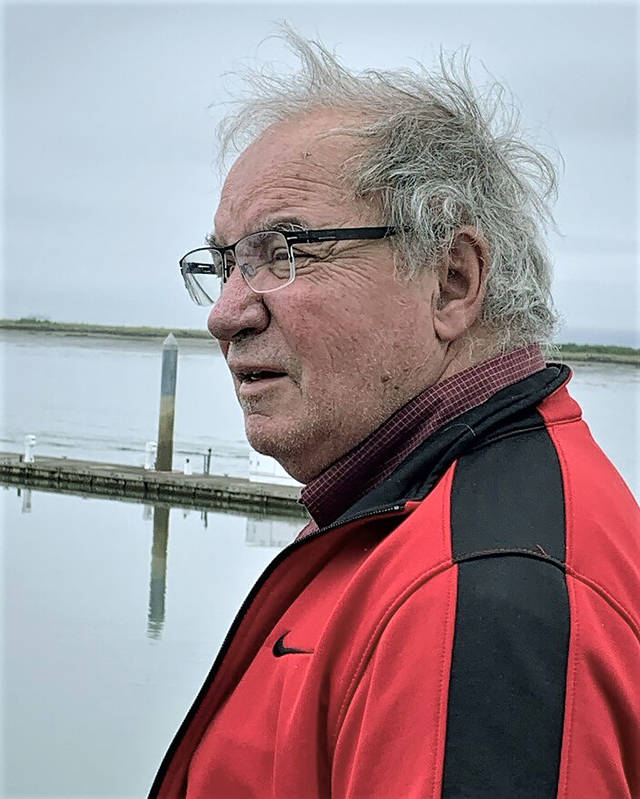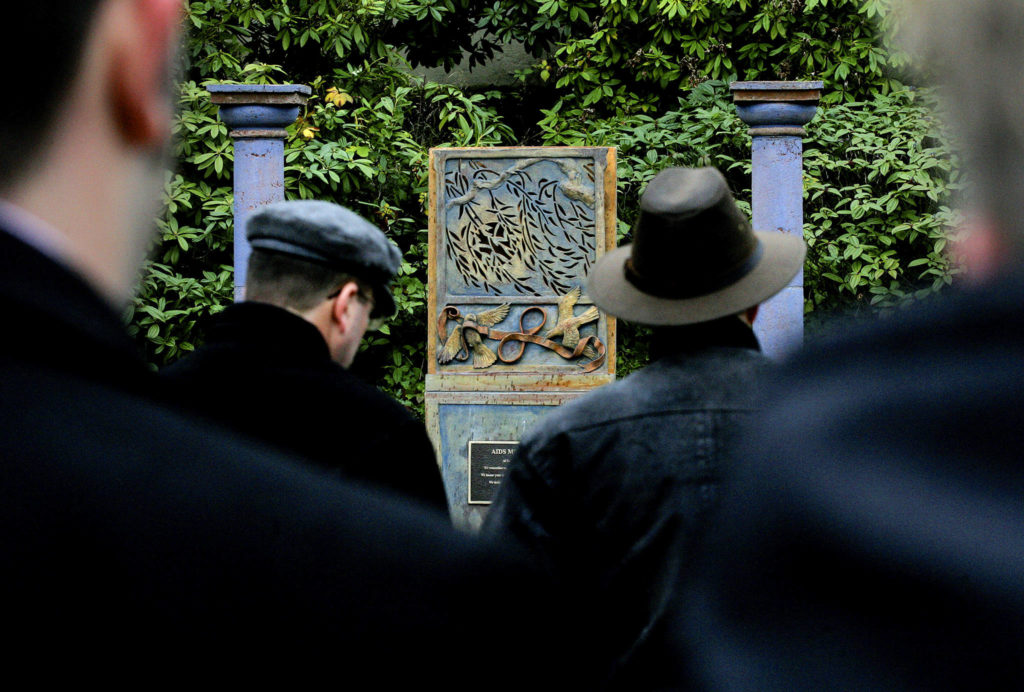Frank Busichio started doing AIDS work at the Snohomish Health District in the early 1990s. He remembers those somber days, when the staff planted flowers at the agency’s building each month. It was a time to talk about everyone who had died from the virus.
“It was diagnosis to death,” he said.
That’s not the case today. There’s no cure for HIV/AIDS, but people treated with powerful antiretroviral drugs are living to see their later years.
From August 1992 to June 2009, Busichio was the health district’s HIV prevention and care manager. In those early days, he said, four case managers were each tasked with helping 50 people infected with the deadly virus. “Each one was a saint,” Busichio said.
As COVID-19 vaccines bring hope of beating the current pandemic, it’s easy to overlook an anniversary of another health crisis.
It was 40 years ago, on June 5, 1981, when the first five cases of what later became known as AIDS were officially reported in the federal Centers for Disease Control and Prevention’s Morbidity and Mortality Weekly Report. In those four decades, at least 700,000 people in the United States have died of HIV/AIDS — roughly 100,000 more than have died from COVID-19 since early 2020.
Busichio, 74, has a master’s degree in public health from Columbia University. His work with people affected by HIV began in 1987 in New York City with the Gay Men’s Health Crisis/Community Research Initiative.
“It was an amazing challenge, not being gay and not part of that community,” he said. “I was realizing it was so important.”
He’s still involved as the leader of AIDS Project Snohomish County. Founded in 1993, the nonprofit supports prevention efforts and helps people here living with HIV and their families. Before the pandemic, the group raised money through its Gay Bingo events, and hosted monthly friendship dinners for people affected by HIV.
Dr. Ann Dreyer was a co-founder, along with Busichio, of AIDS Project Snohomish County. An internal medicine physician who retired in 2017, she had what she described as a “very large HIV practice” at The Everett Clinic in Mukilteo.
The changes she’s seen in the outlook for people with HIV are extraordinary.
Dreyer wrote “Reflections of My Quarter Century in HIV Care,” an article in which she recalls the grim past.
She said that once someone was diagnosed with AIDS in the early 1990s, and had a T cell count under 200, “the mean time to death was less than two years.” She’d reassure patients that “although treatment options were limited, they would not be abandoned.” Her honest approach included talk of maintaining their dignity and controlling any pain.
What a difference antiretroviral therapy has made.
Today, someone diagnosed with HIV in their 20s or 30s may well have a normal lifespan, thanks to the medication, Dreyer said Friday.
The shift that’s made HIV a manageable condition came in about 1996, Dreyer said, with the development of protease inhibitors, the type of antiretroviral drug used in treatment. They work by blocking the virus from entering certain cells and making copies of itself.
Dr. Chris Spitters, the Snohomish Health District’s health officer, has also seen how medical research and innovation have made the prognosis for someone diagnosed with HIV “far better than it was during my medical training.” Still, he stresses prevention.
“In the late 1980s, most patients died within a year or two of being diagnosed with AIDS. Now it can be managed like a chronic disease,” Spitters said by email Friday. “Once we learned how it is transmitted and prevented, I never would have imagined that three decades later we would still have ongoing transmission.
“The health district still receives approximately 50 reports of newly diagnosed HIV each year,” Spitters wrote. Stopping preventable infections “is at the core of the health district’s communicable disease control mission.”
A local needle exchange program aims at preventing transmission among IV drug users.
According to a Snohomish Health District Summary of Reported Communicable Diseases, there were 52 newly diagnosed cases of HIV in 2019. Statewide, Department of Health figures show, 14,000 people were estimated to be living with HIV in Washington at the end of 2019.
James Ludwig is program manager of the medical case management team for Lifelong, an organization with a nearly 40-year history of helping people affected by HIV/AIDS. Through its Everett office, Lifelong serves 436 people, providing help with case management, housing, food, a dental program and testing.
In Snohomish County, about 1,200 people are living with HIV, Ludwig said.
“We’ve made huge progress in the last 40 years,” said Ludwig, adding that treatment has so evolved that the virus is managed with “one pill once a day.” The goal today, he said, is for HIV-positive people to become “undetectable,” making them unable to transmit the virus. And because of prevention strategies, few with HIV progress to deadly AIDS.
Early regimes “were difficult to take,” said Dr. Dreyer, who wrote of past treatments consisting of as many as 20 pills a day, with terrible side effects.
Years ago, tributes to those lost to AIDS marked a time in history. Journalist Randy Shilts was nominated for a National Book Award for his 1987 nonfiction “And the Band Played On: Politics, People and the AIDS Epidemic.” In the early 1990s, Tony Kushner’s “Angels in America,” which explored AIDS, won the Pulitzer Prize for Drama. Tom Hanks won an Oscar for his portrayal of a lawyer with AIDS in the 1993 film “Philadelphia.”
Twenty 12-foot-square panels of the NAMES Project AIDS Memorial Quilt were on display for several days in 2005 at Everett Community College. Each block had been lovingly created by a family member or friend, their grief expressed with a precious life remembered. By 2005, 324 people in Snohomish County had died of AIDS.
An AIDS memorial stands on the west side of the Snohomish County Campus, near the Mission Building in downtown Everett. Busichio said it was a project of the Snohomish County Gay Men’s Task Force. The bas relief sculpture, depicting birds, leaves and ribbons, is set between two columns.
Dedicated Dec. 1, 2005, World AIDS Day, it was the first such memorial in the state. “We remember our friends and family lost to AIDS. We honor your struggles, your lives, and your memory,” says the memorial’s plaque.
The top of the sculpture’s textured wall is damaged, and needs a repair. With all the new construction nearby, the AIDS memorial looks forgotten. “We’re talking about what we can do about that. I think it’s important,” Busichio said.
“Our job is to keep that light shining,” he added. “Our role is advocacy, making sure people are still talking about HIV/AIDS.”
Julie Muhlstein: jmuhlstein@heraldnet.com
Talk to us
> Give us your news tips.
> Send us a letter to the editor.
> More Herald contact information.



























